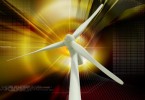RWEA, PATRES, RPIA and ARmHE condemn ANRE’s proposal: “Romania buries renewable energy”
Romania continues to promote a policy by which the state plans to bankrupt renewable energy producers that currently ensure about 20% of electricity consumption at national level, according to associations representing investors in renewable energy in Romania – RWEA, PATRES, RPIA, ARmHE.
At ANRE’s proposal, the Government made the decision to keep for the third year in a row the mandatory quota of electricity produced from renewable energy sources at an extremely low level, unsustainable for the existing investments, namely 12.15% compared to 17% initially provided in Law no. 220/2008, law based on which all investments in the sector have been made, reads the joint press release of associations representing investors in renewable energy in Romania.
“While the entire world has decided to fight against CO2 emissions, Romania buries renewable energy”, the press release also states.
RWEA, PATRES, RPIA and ARmHE firmly condemn ANRE’s proposal and protest against the decision made by the Government, the quoted source mentions.
“This decision is deeply wrong, based on outdated calculations and it will throw into chaos the renewable energy industry. Although studies repeatedly presented to ANRE and Government and unofficially confirmed (or within Working Groups) by authorities’ representatives show losses of over RON 2.1bn in a single year (2014), revealing the dramatic situation of energy producers from renewable sources, these institutions continue to prove carelessness and even ill will towards the one area that has generated significant investments in the production of electricity throughout the crisis period”, the joint press release reads.
RWEA, PATRES, RPIA and ARmHE believe that “the situation is critical, the quota approved covering in 2016 about 50% of green certificates that will be in the market. According to ANRE Order no. 183 of December 31st 2015, the mandatory acquisition quota of green certificates for 2016 was set at 0.317 GC/MWh not exempted. According to this value, 12,116,662 green certificates will be necessary in 2016, compared to 18,909,036 green certificates that will be issued according to ANRE estimate, thus generating in 2016 a surplus of 6,792,374 green certificates added to that already existing in the market of 4,045,324 (according to OPCOM data on 17.12.2015)”, the quoted press release informs.
RWEA, PATRES, RPIA and ARmHE also warn that in conditions of this huge surplus, according to regulations in force, green certificates are taxed upon granting and not at the actual time of sale, which forces producers to permanently credit the state, although they are in an actual state of insolvency caused by the failure to sell green certificates.
“Basically, by decisions made, the authorities are knowingly pushing investors in the renewable energy industry towards bankruptcy, generating a boomerang phenomenon that will affect the industry in the future, exports and eventually the entire population. With all concern for the end-consumer, the final result will be the increase in electricity prices, which have decreased significantly including due to renewable energy contribution. Moreover, the Government’s policy, started in 2013 by changing the support for renewable energy, endangers the medium and long-term energy security of Romania, by failure to ensure a honest treatment towards investments made in new electricity generation capacities”, the press release also states.
In this climate of lack of predictability and lack of fairness for existing investors who feel cheated by the Romanian State, associations signatories to the communiqué ask: “Associations and Employers representing the industry of producers of energy from renewable sources in Romania, with an installed power of over 5,000MW and investments of around EUR 8bn, hereby make an appeal of force majeure, to save from collapse, in emergency regime, a sector of maximum importance for the Romanian economy, by creating a stable, predictable and fair legislative framework, in order to maintain the existing investments and to ensure further development of the electricity sector, by attracting new investments”.
Image courtesy of dream designs at FreeDigitalPhotos.net



Recent Comments